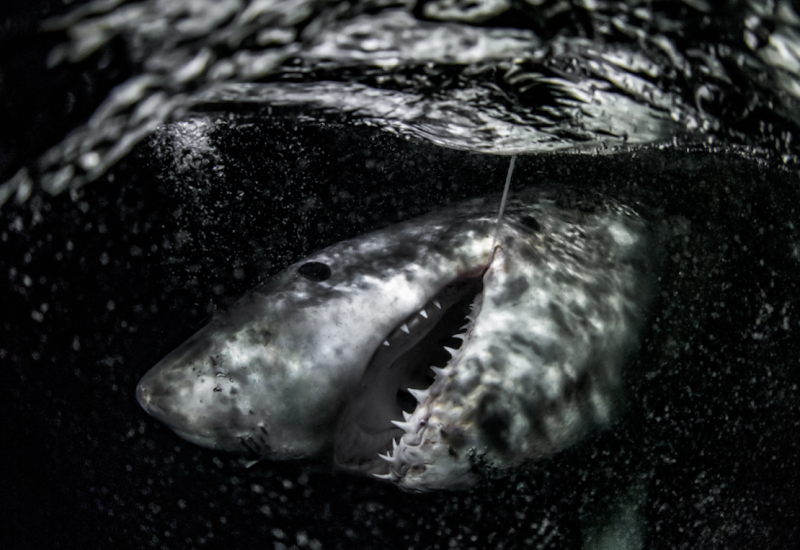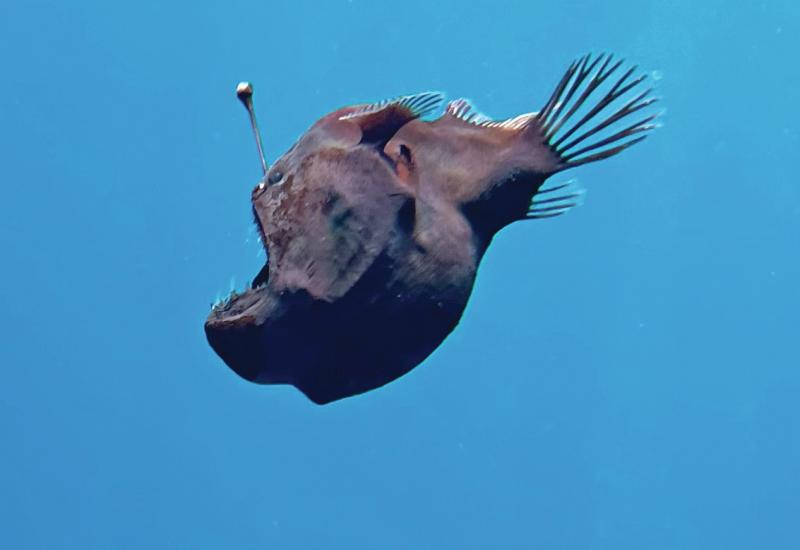Fish Facts: The Flasher And Fairy Wrasse
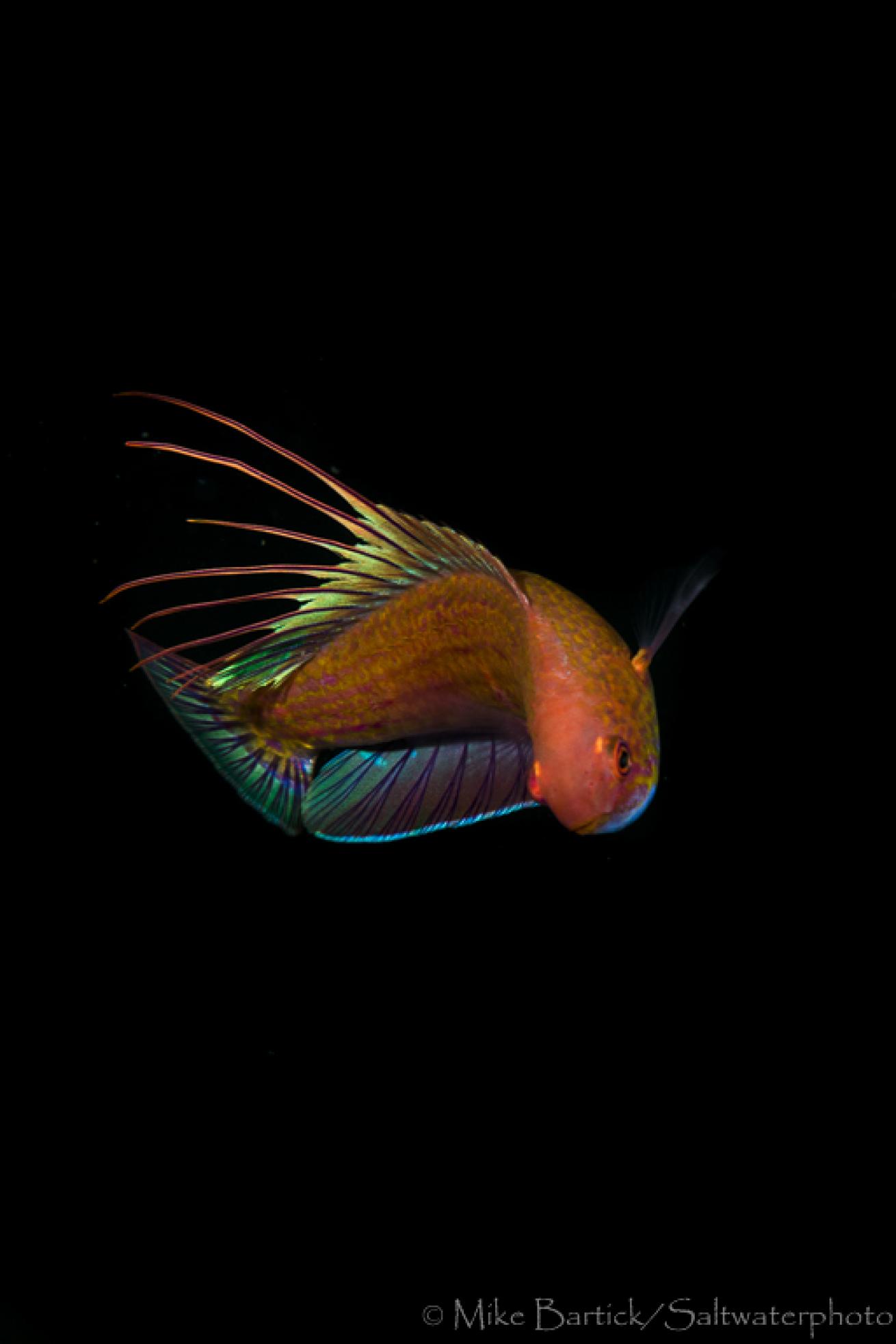
Fast focus techniques like focus lock or rear button focus are vital for capturing the peek of the action. Flasher wrasse are unpredictable at best and will often swim straight at the lens.
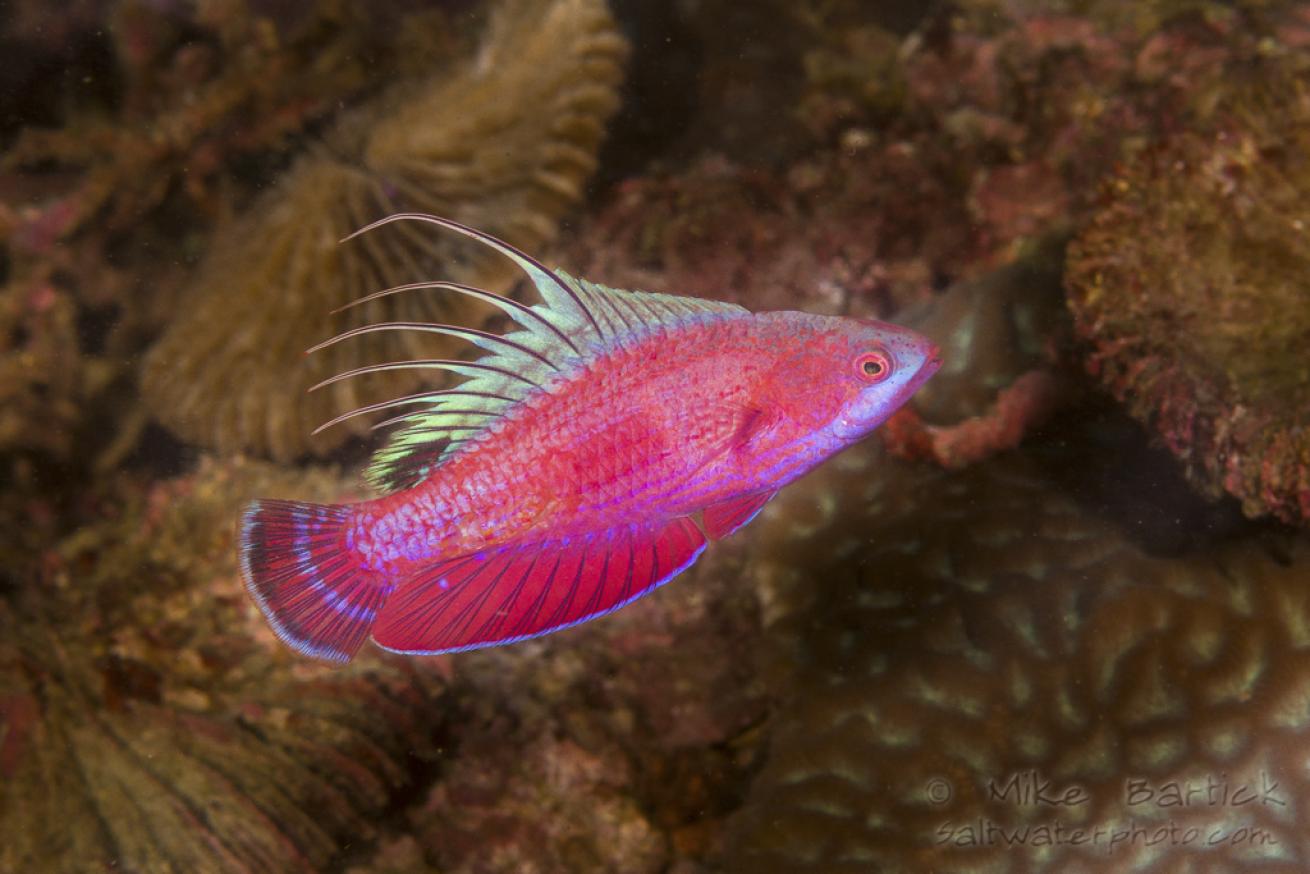
Mike BartickA cliché that quickly came to mind on my very first outing was, “easy as shooting fish in a barrel”. The irony of that statement helped me to keep my humor levels up when I discovered I was tracking the wrong fish for an entire dive. Reading a little more about the flashers I discovered that while they can be seen displaying at almost any time of the day, they become most active in the late afternoons.
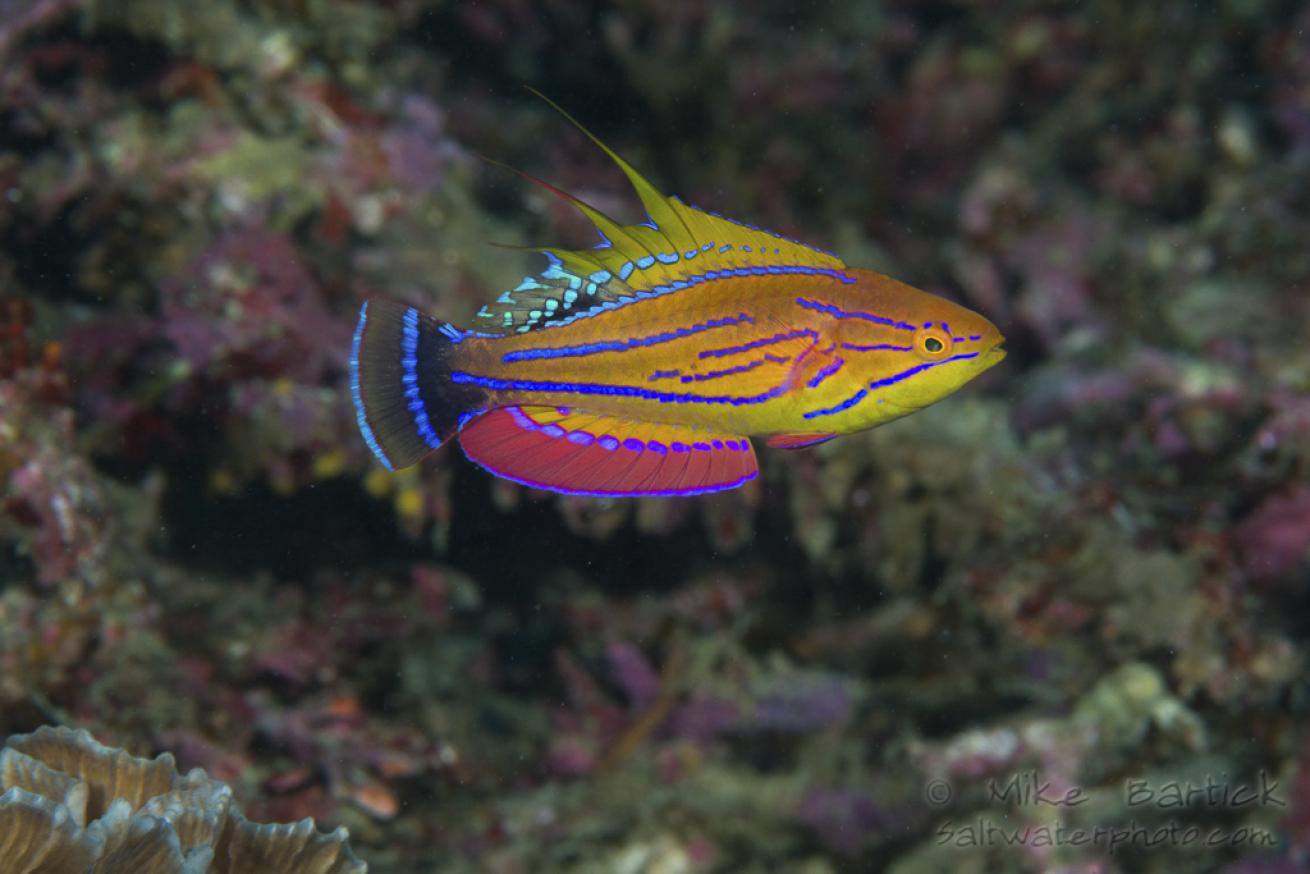
Mike BartickThe unmistakably garish and brightly colored display of a Flasher wrasse is seductive to say the least. Seeing them for the first time was nothing short of incredible. I still have a hard time shooting anything but flasher wrasse when im on a sight that has them.
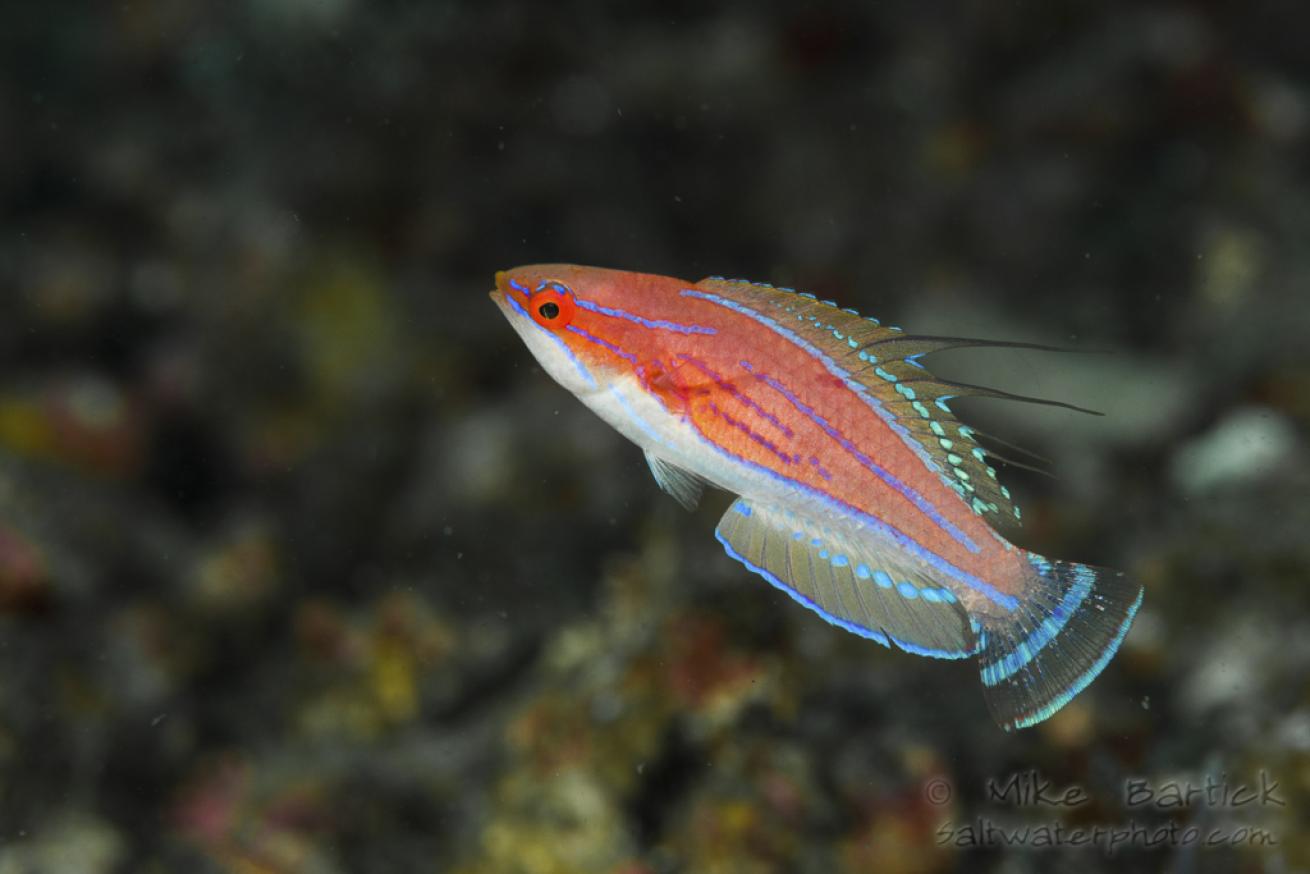
Mike BartickA closer detailed image reveals the subtle changes of the male as he extends the spiny filaments of his dorsal fin becoming gaudy and colorful. This display caught my eye for the very first time and from that point on I was hooked.
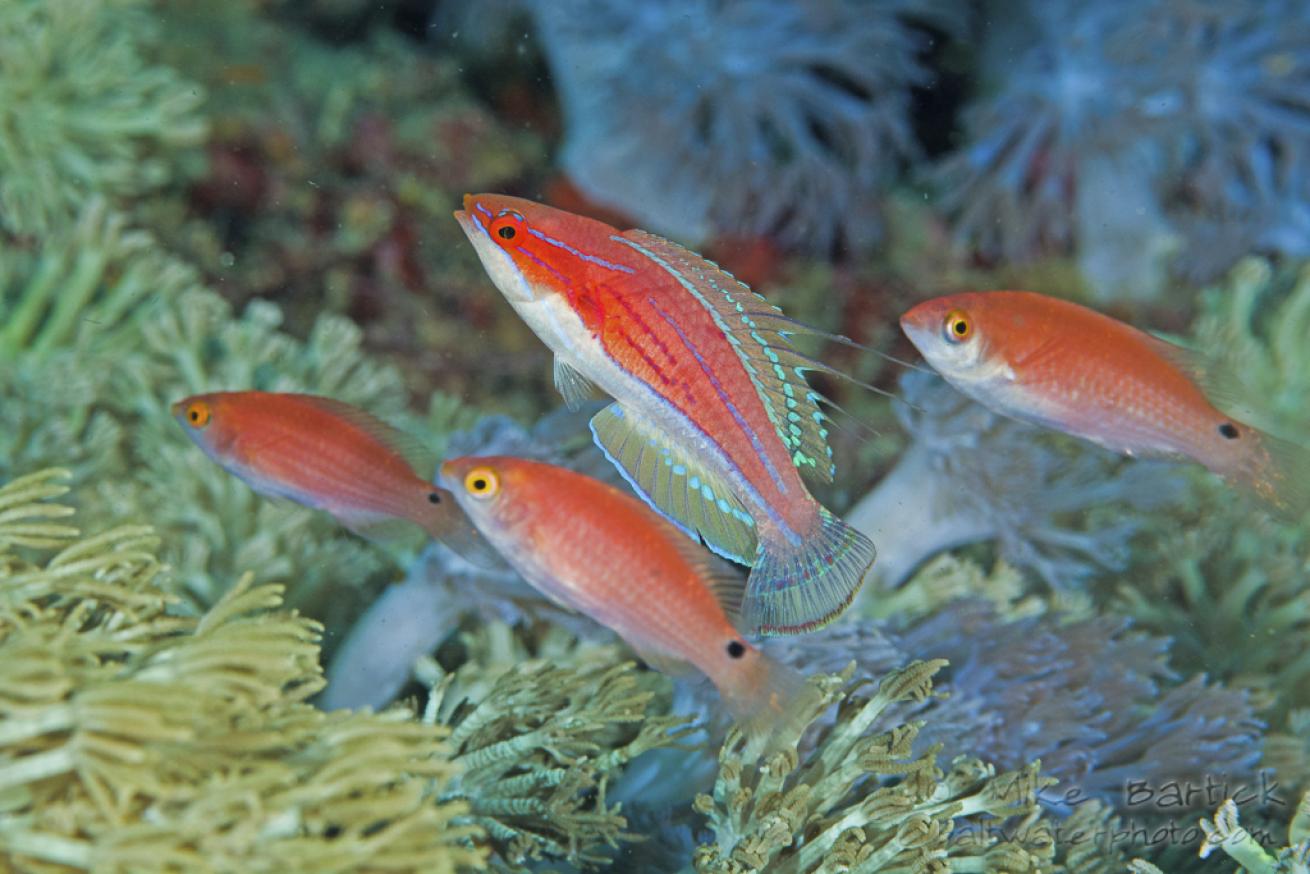
Mike BartickThe male Flasher wrasse commands his haram of females swimming quickly around them and moving from one pod to the next in an attempt to recruit and spawn. There may be several males in a small area all trying to spawn with willing females and when the males face off they will “Flash” or “display” themselves by extending their dorsal Filamented dorsal spines ad extending their anal fin. The colorations near the face can saturate and their body will glow with vibrancy.
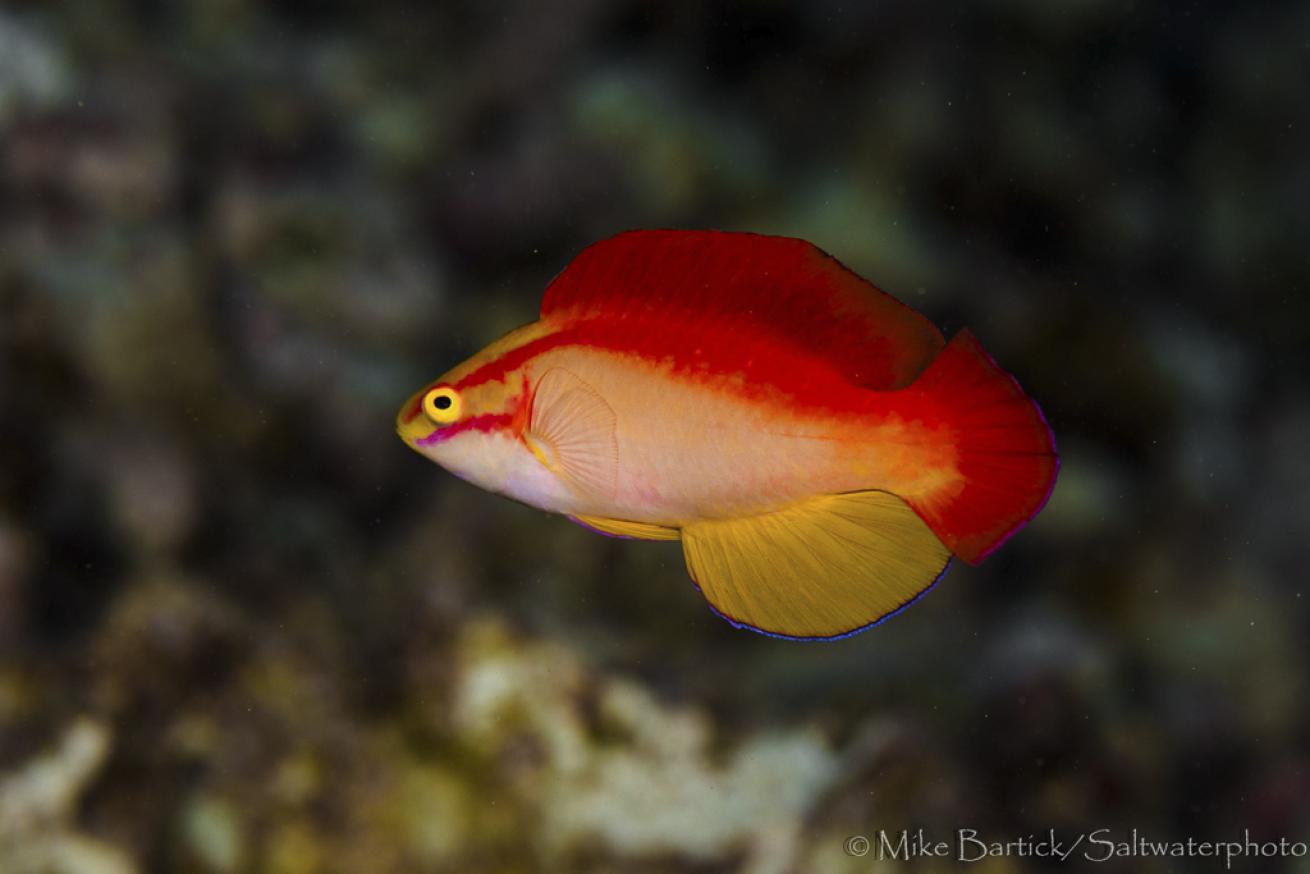
Mike BartickHawaii’s, Flame Fairy Wrasse (Cirrhilabrus jordani) shot in the Molikini cinder cone just off the coast of Maui. These small clusters of fairy wrasse reside a bit deeper than their Indo-Pacific brethren and seemed to be a bit more laid back.

Mike BartickThe Red finned fairy wrasse is a fast moving subject that will pause momentarily to signal nearby females, allowing an alert photographer the split second opportunity needed to capture an image. The redish silver body becomes brightly colored while the male is excited. The Fairy’s Lunate fin is sharp and angular and lacks the sharp spiny filaments of a typical flasher wrasse.
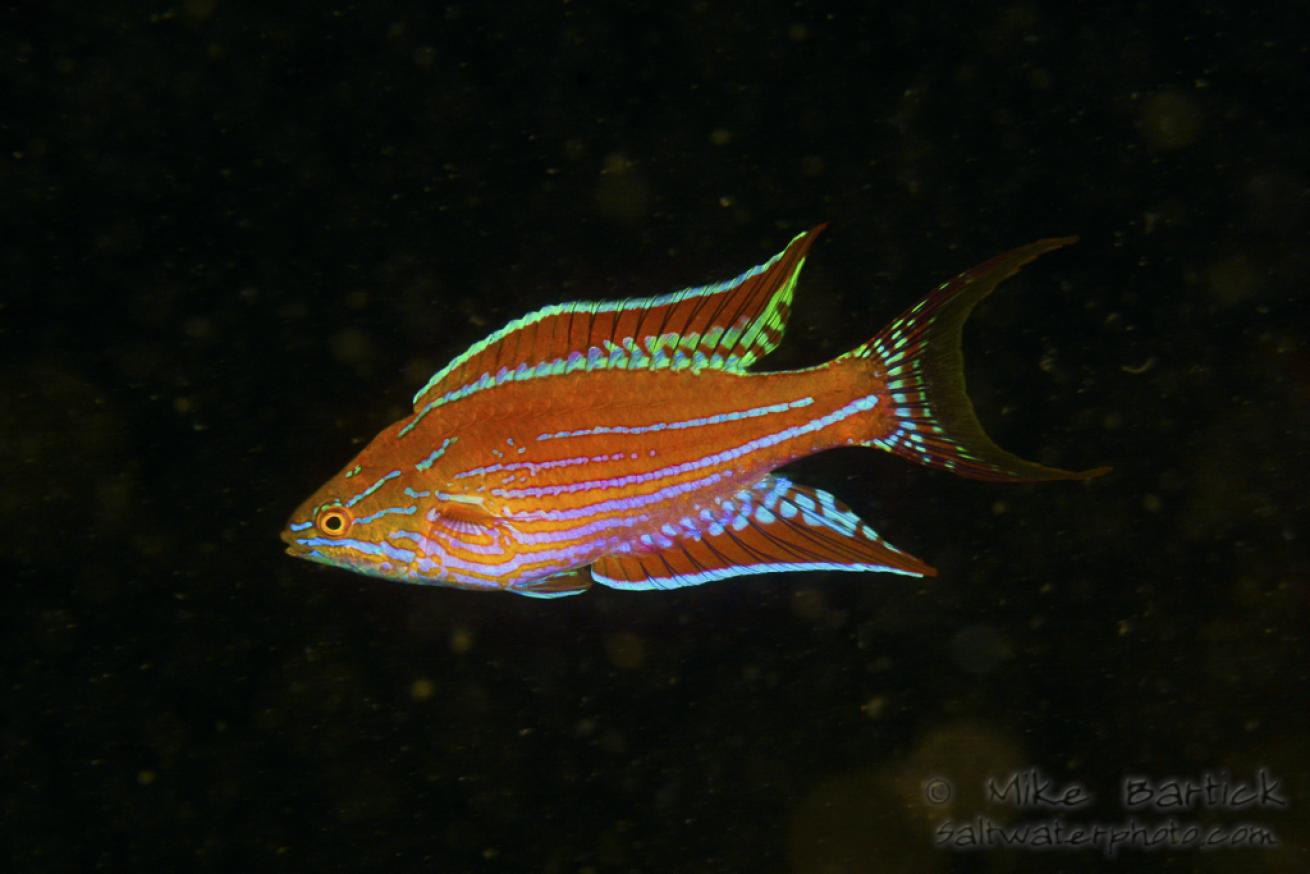
Mike BartickSharp Finned Fairy Wrasse ( Paracheilinus angulatus) Shooting these wrasse with a longer lens like the Nikon 105mm or Canon 100mm will help the photographer to gain a little more reach through the water and to magnify the subject, once the subject has been spotted. Using focus lock methods will assist in keeping the subject focused as it travels in and out of the plane of field. Tracking them laterally and shooting them in an ID, 2 dimensional fashions works well to help capture the display and colorations that a head on composition would miss.
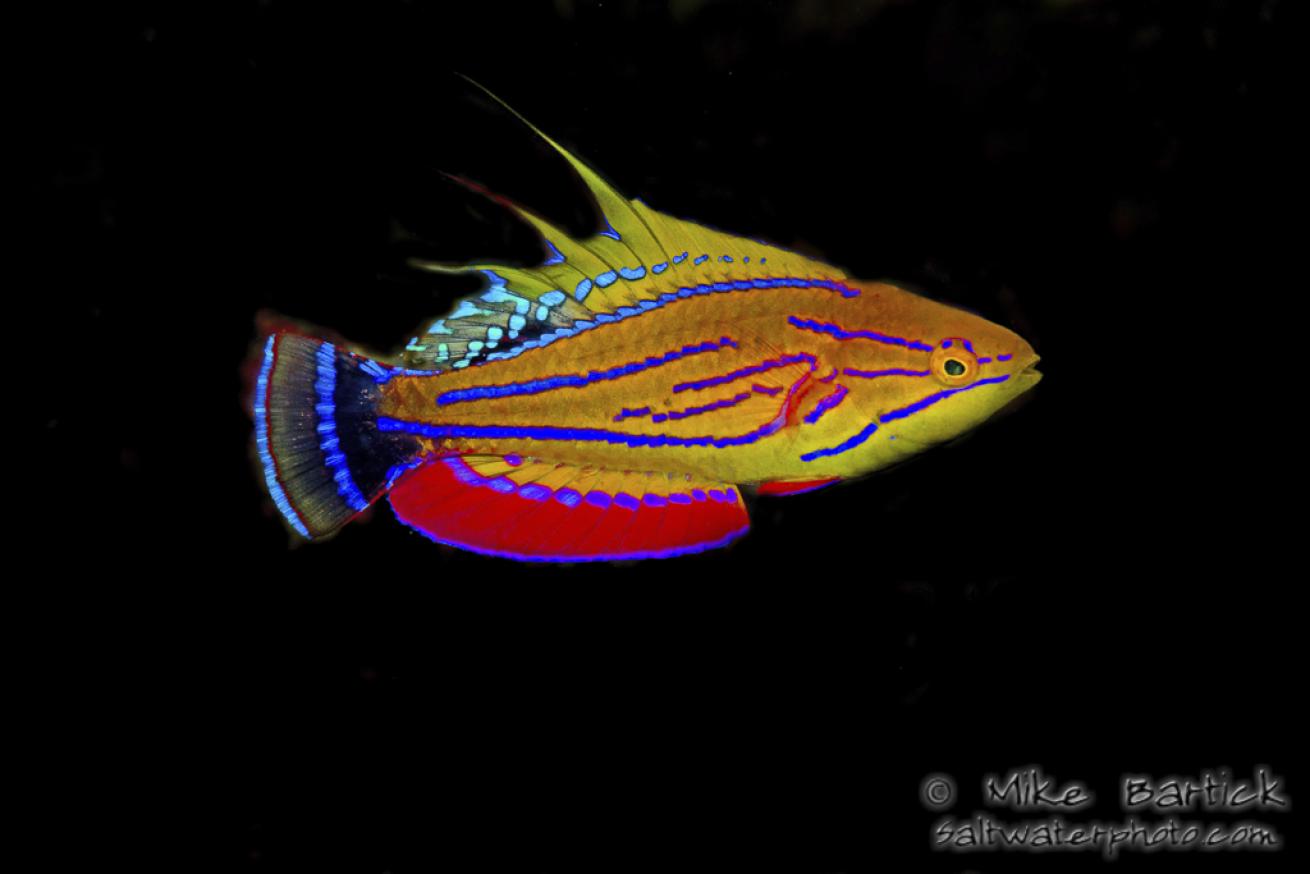
Mike BartickThe carpenters flasher wrasse is a classic example of just how lovely, gaudy and detailed these over-caffeinated unpredictable fish can be. A moment caught as the male entices a female to mate.
After reading an article introducing me to the incredible colors and behavioral displays of Flasher Wrasse my obsession to photograph one instantly set in.
The striking images caught by the photographer jumped off the pages at me and made we wonder why I hadn’t seen or heard of these stunning creatures as of yet. How did they manage to stay off of the radar for so long? And why do they escape the attention of so many photographers?
Flasher and Fairy Wrasse aren’t a large fish but what they lack for in size is made up for in their sublime and fleeting beauty. These smaller wrasse fish were recently described as a new species in 2006 and fall into the family of Labridea.
Somewhat laterally compressed, like all wrasse, these fish swim with just their pectoral fins. The bio geographical range is primarily the Indo-Pacific from Raja Ampat, Indonesia and Japan to the Philippines, but Hawaii even gets into the action with a flame wrasse.
Finding the flashers on select dive sites isn’t too difficult, look for small to sometimes very large groups of pinkish (smaller female) wrasse fish hovering near the bottom or over broken coral and rubble on seaward facing slopes.
Depth can vary but they tend to prefer the 60 foot range the most, with the exception of the Hawaiian flame fairy wrasse which are below the 90 foot mark. The female flashers form small harems of 6-10 fish with perhaps an immature male in the mix.
The dominant male watches over his pod of females while swimming about seeking out females to mate with from the surrounding pods. The dominant males from the other pods will often clash as they dart about, extending their pectoral and anal fins and flushing with color. The flash is both a warning and a seductive dance used to intimidate and seduce. This flashy display happens quickly but when it does, these otherwise lack luster fish become irresistibly beautiful and have been known to seduce humans too.
Photo Tips:
Shooting flasher wrasse photos is best accomplished with a longer lens and without using a modeling light as it spooks the fish.
The best time to photograph them is in the afternoon, around the 3:00 hour.
Locate them by looking for the low lying schools or harems with a fast moving satellite fish that moves around the pod and other nearby pods or smaller schools.
After locating the pods, watch for the fast moving predominant male. This dominating male is your photographic target.
If you enjoy the challenge of trying to photograph something new then the Flashers or Fairy Wrasse will make a superb addition to your portfolio. Remember to be patient, try not to crush the corals and enjoy the process..
Now get out there and have an adventure!
Special Thanks to: William Tan, Alexis Princepi, Marty Snyderman and Crystal Blue Resort


